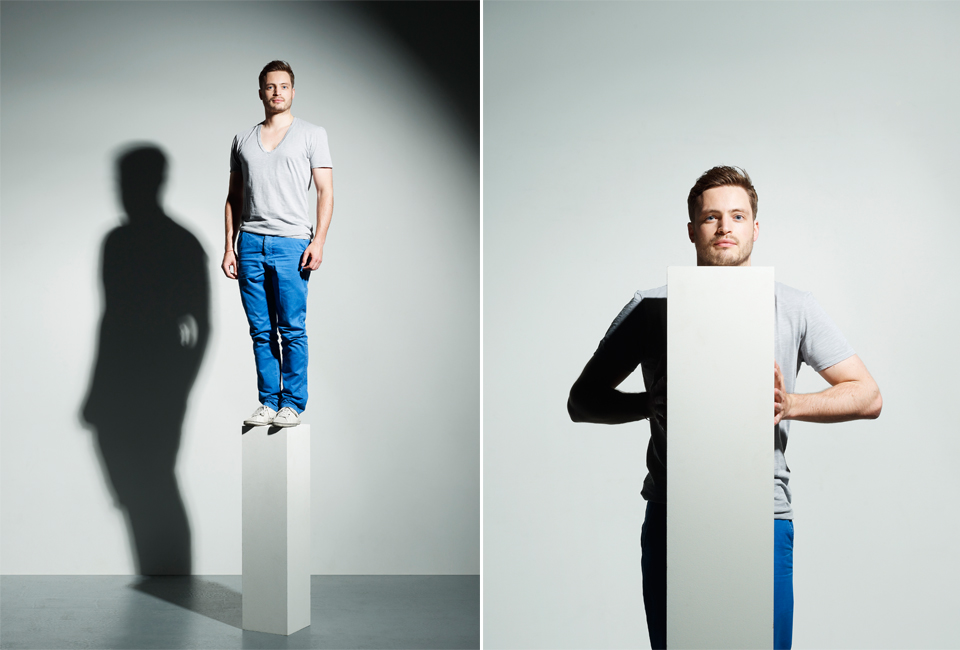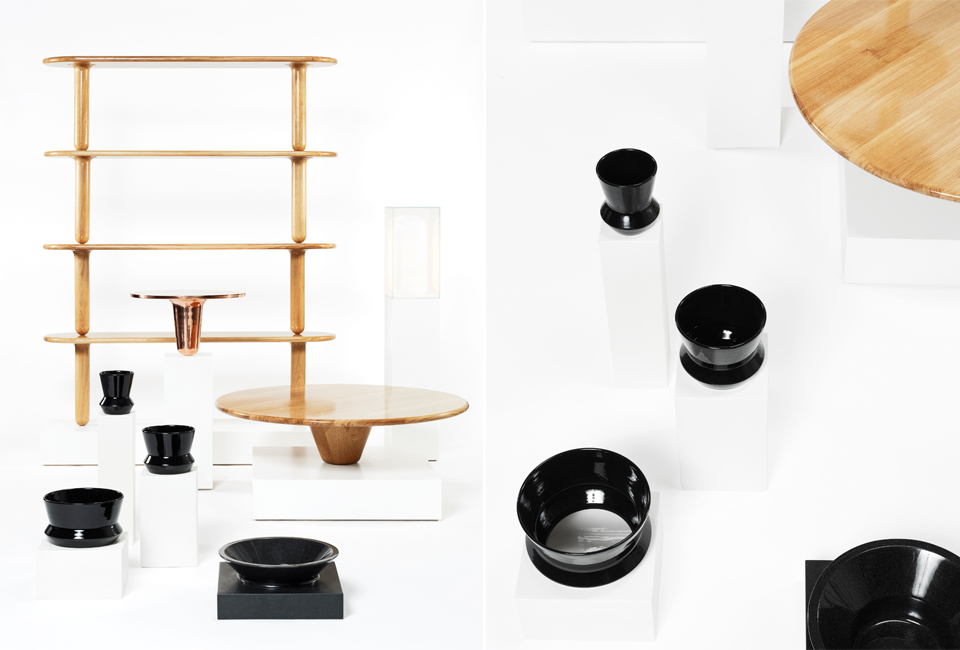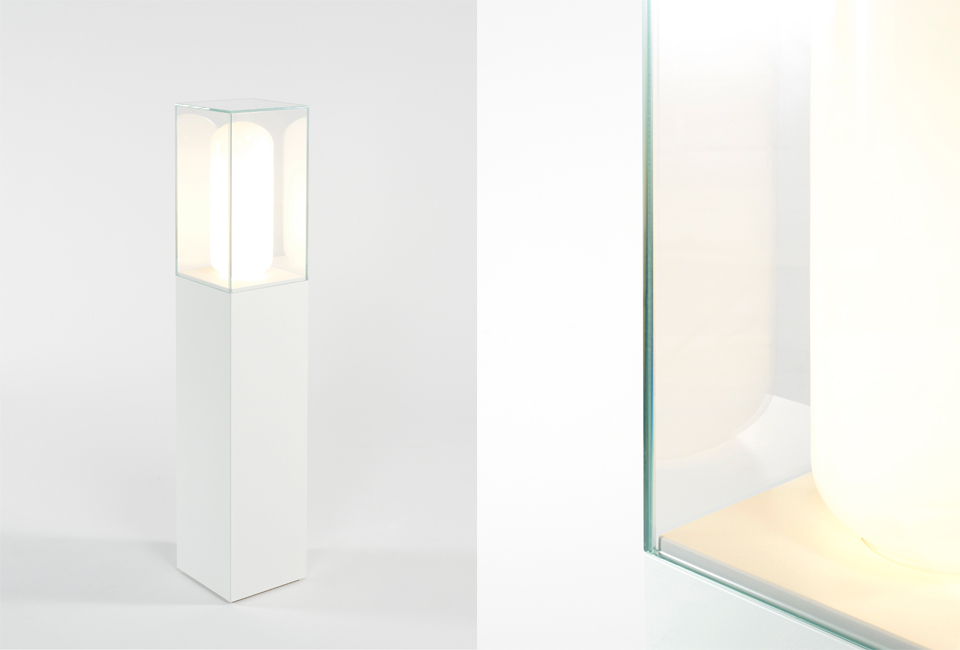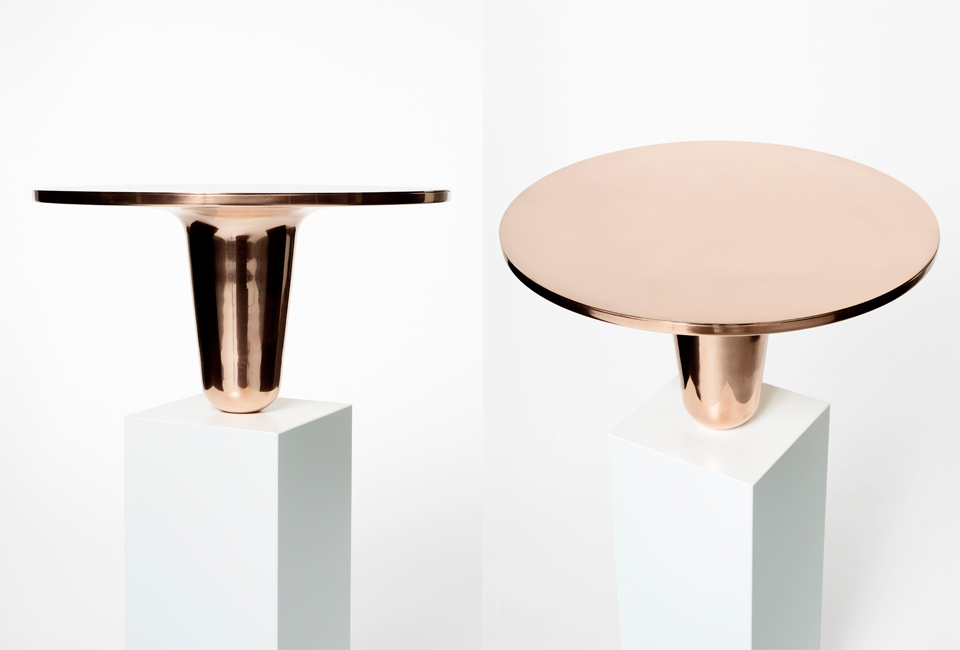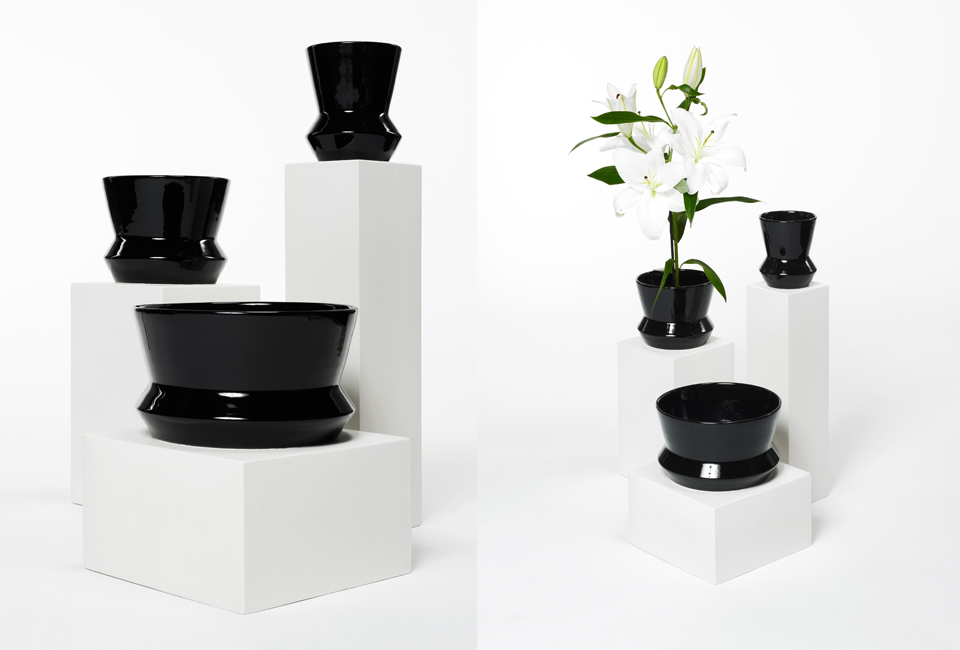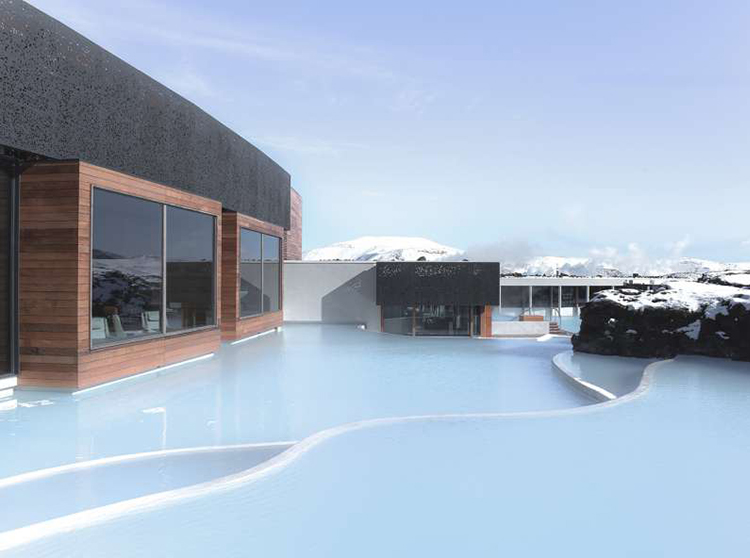NICOLAS LE MOIGNE, PODIUM collection
THE ELEVATION GAME
Le Moigne’s PODIUM collection, which consists of six parts, is based on observations of the customary forms of presenting art and design by galleries and museums. Objects are mostly exhibited on a pedestal or plinth, which serves to enhance the effect of the object through its simple form and the deliberate choice of dimensions. This iconic form of presentation inspired Le Moigne to assume a point of departure that characterizes all objects in thePODIUM collection: the object and the plinth are interconnected – they are in unison.
Not without a degree of irony does the PODIUM collection play with the plinth or pedestal as a vehicle for elevation. Thus none of the objects of the PODIUM collection could exist without its respective “pedestal” – it is the pedestal that results in the object gaining its aesthetics and functional completeness. This connection between object and vehicle for projection confuses conventional manners of viewing something and challenges the viewer to take a second, more concentrated look. A shift in observation occurs – the form and the function of the object are questioned anew.
The single objects are created with different techniques of rotary motion like wood turning, metal spinning, stone turning, glass blowing and ceramic wheeling. These craft processes respectively define the individual final form ofthe PODIUM objects.
The PODIUM collection consists of three vases (ceramic), a lamp (glass), a bowl (stone), a shelf (wood), an occasional table (copper) and a couch table (wood).
